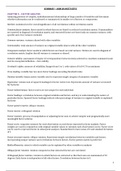Resume
Samenvatting Advanced research methods quantitative kwantitatief (cijfer 9,9)
- Cours
- Établissement
- Book
Samenvatting Advanced research methods quantitative kwantitatief Hair et al., 2010 Focus op factor analyse en regressie analyse
[Montrer plus]




